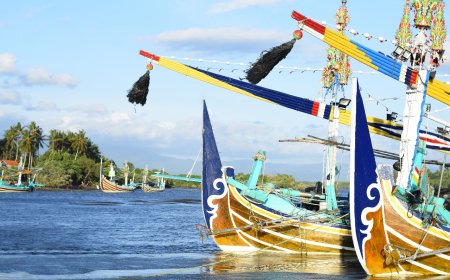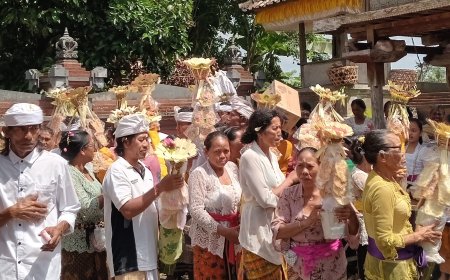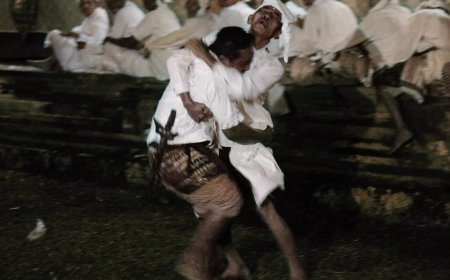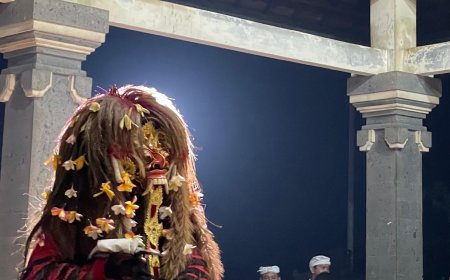Ngambeng Tradition of Samuan Tiga Temple: Embracing Spiritual and Cultural Beauty
The island of Bali is famous for its many religious ceremonies that cannot be separated from customs, traditions and culture. According to sociology, traditions are customs passed down from ancestors that are still being preserved in society. Like the Ngambeng tradition carried out by the people of Bedulu village, Blahbatuh sub-district, Gianyar Regency, it is closely related to the spiritual and cultural beauty of Balinese Hinduism.
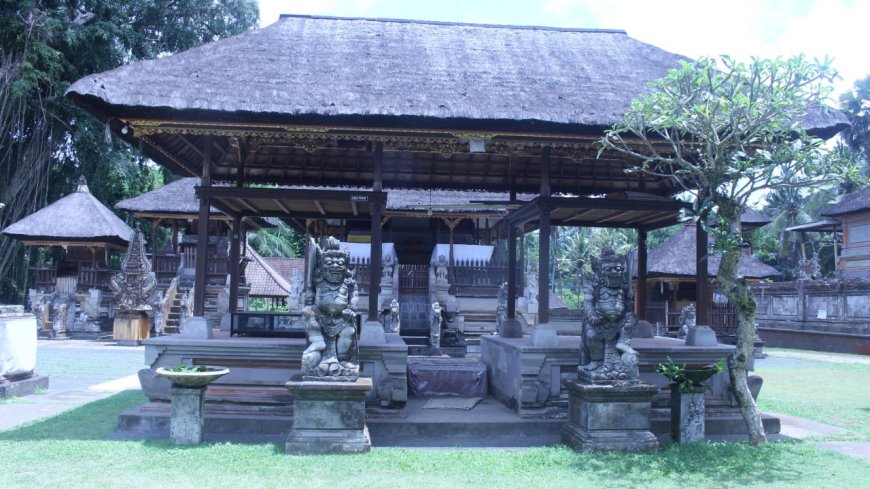
Ngambeng is a ceremony that held fifteen days before the Dewa Yajna ceremony at Pura Samuan Tiga or often called “nyambut karya piodalan”. Ngambeng is carried out by a group of children to adults and lasts for seven days starting on Tilem Kadasa. If the results of Ngambeng are deemed insufficient to organize piodalan at Pura Samuan Tiga, then this procession is continued by a group of adults appointed by the work committee, namely sekaha gong, sekaha angklung, or sekaha nunceg. Meanwhile, the children who are involved come spontaneously without being asked. Based on history, the Ngambeng tradition was carried out to be able to repair the palinggi-hpalinggih in Samuan Tiga Temple which was damaged by the Batur volcano eruption and to support the implementation of Dewa Yajna in Samuan Tiga Temple.
In the implementation of Ngambeng, "pengayah" will walk around to all the houses of the Bedulu Village community to get the facilities that will be used for piodalan purposes at Samuan Tiga Temple. The ethics believed in this tradition is when visiting or when visiting the Bedulu Village community's house must say the greeting "Om Swastyastu", and convey the intention of coming to the house by stating themselves as Ngambeng pangayah, namely "tyang Ngambeng". This simple greeting is a special etiquette for Ngambeng pangayahs. The clothes used by the pangayah Ngambeng are light traditional clothes or middle traditional clothes. The traditional clothes used by the boys are cloth (wastra), shawl, shirt, and headband (destar/udeng).
Children who participate in Ngambeng activities also prepare tools to support the Ngambeng tradition. The tools carried in the Ngambeng tradition are knives, blakas, sanan, and several plastic bags or sacks to carry the goods from the Ngambeng. Knives are used to help get upakara facilities that are still on the tree, such as janur, leaves, flowers, and fruits. The machete (Blakas) has the same function as a knife, but the machete is usually used to cut harder materials, for example if there are people in the community who are not using the machete. For example, if there are people who offer coconuts to eat pangayah Ngambeng. Plastic Bags/Karung are used to collect items from Ngambeng so that they are collected into one place. Pikul (Sanan) is used to carry the Ngambeng products together.
Therefore, the Ngambeng tradition has an impact on cultural preservation for the Bedulu Village community as well as teaching the power of mutual cooperation to children from an early age. In its implementation, Ngambeng provides lessons on the importance of cooperation in life in achieving common goals that are carried out from generation to generation in spiritual and cultural wraps. This Ngambeng tradition also shows that the people of Bedulu Village are still consistent in maintaining the culture of their ancestral heritage.









